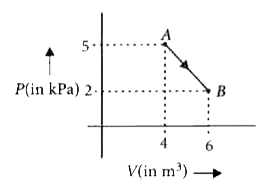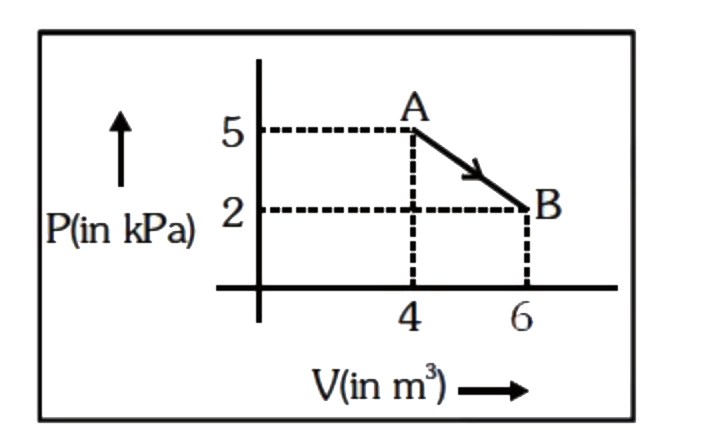What happens to the change in internal energy of a gas during adiabatic expansion?
To determine what happens to the change in internal energy of a gas during adiabatic expansion, we can follow these steps:
1. Understand Adiabatic Process:
- An adiabatic process is one in which no heat is exchanged with the surroundings. Therefore, we can state that the heat transfer Q=0.
2. Apply the First Law of Thermodynamics:
- The First Law of Thermodynamics is given by the equation:
ΔU=Q−W
where ΔU is the change in internal energy, Q is the heat added to the system, and W is the work done by the system.
3. Substituting Values for Adiabatic Process:
- Since Q=0 in an adiabatic process, we can substitute this into the equation:
ΔU=0−W
This simplifies to:
ΔU=−W
4. Understanding Work Done:
- During adiabatic expansion, the gas does work on the surroundings. Therefore, the work done W is positive.
5. Determine the Change in Internal Energy:
- Since ΔU=−W and W is positive, it follows that:
ΔU<0
This indicates that the change in internal energy is negative.
6. Conclusion:
- A negative change in internal energy means that the internal energy of the gas decreases during adiabatic expansion.
Final Answer:
The change in internal energy of a gas during adiabatic expansion decreases.
---
- An adiabatic process is one in which no heat is exchanged with the surroundings. Therefore, we can state that the heat transfer Q=0.
- The First Law of Thermodynamics is given by the equation:
ΔU=Q−W
where ΔU is the change in internal energy, Q is the heat added to the system, and W is the work done by the system.
- Since Q=0 in an adiabatic process, we can substitute this into the equation:
ΔU=0−W
This simplifies to:
ΔU=−W
- During adiabatic expansion, the gas does work on the surroundings. Therefore, the work done W is positive.
- Since ΔU=−W and W is positive, it follows that:
ΔU<0
This indicates that the change in internal energy is negative.
- A negative change in internal energy means that the internal energy of the gas decreases during adiabatic expansion.
The change in internal energy of a gas during adiabatic expansion decreases.
Similar Questions
One mole of an ideal diatomic gas undergoes a transition from A to B along a path AB as shown in the figure

The change to internal energy of the gas during the transition isView SolutionThe work done and internal energy change during the adiabatic expansion of a gas from a volume of 2.5L to 4.5L against a constant external pressure of 5 atm respectively are (1−Latm=101.3J)
View Solution
Knowledge Check
- Question 1 - Select One
The change in internal energy of two moles of a gas during adiabatic expansion is found to be -100 Joule. The work done during the process is
A100 jouleB−100 jouleCzeroD200 joule - Question 2 - Select One
Cooling of a gas in an adiabatic expansion is due to
Afall in temperatureBenergy spent in doing workCenergy is not spent in doing the workDloss of energy to the surroundings - Question 3 - Select One
In the above question, change in internal energy of gas is
A−2660.23JB−2777.23JC−2767.23JD−2600J
One mole of an ideal diatomic gas undergoes a transition from A to B along a path AB as shown in the figure. The change in internal energy of the gas during the transition is
 View Solution
View SolutionOne mole of an ideal diatomic gas undergoes a transition from A to B along a path AB as shown in the figure,

The change in internal energy of the gas during the transition is :View SolutionIn the above question, change in internal energy of gas is
View SolutionAssertion. Heat energy is completely transformed into work during the isothermal expansion of an ideal gas.
Reason . During an isothermal process, the change in internal energy of a gas due to decrease in pressure is nullified by the change due to increase in volume.View SolutionIn adiabatic expansion of a gas
View Solution

